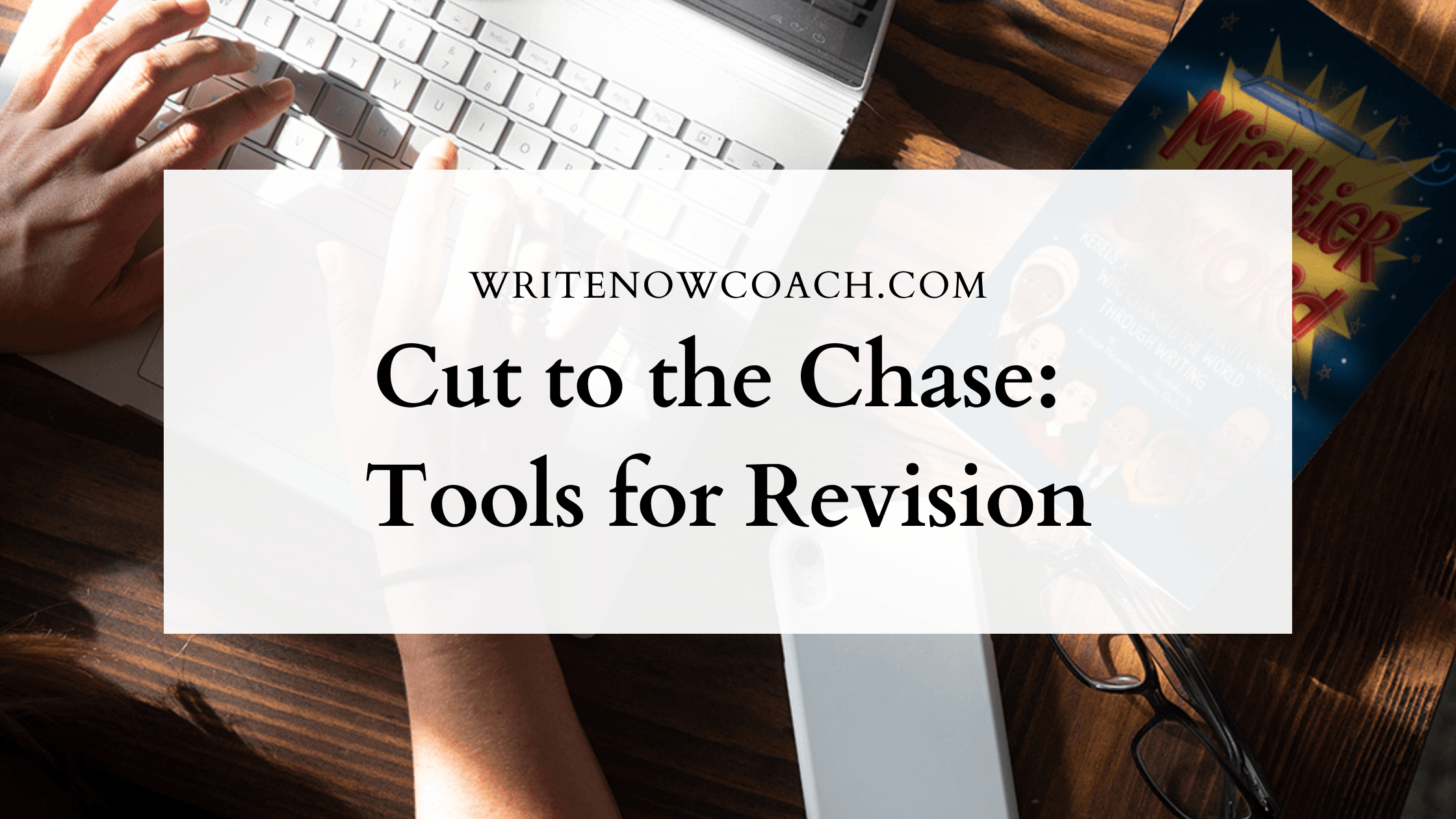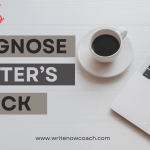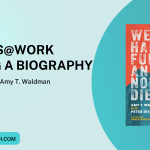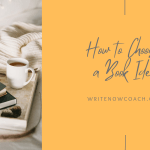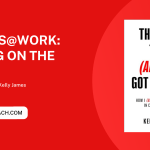Cut to the Chase: Tools for Revision
May 17, 2022
Note From Rochelle
Dear Writers,
No matter what you write, learning how to revise will help you produce a successful manuscript. Read on to find tools for revision.
Happy writing,
Rochelle, the Write Now! Coach
Cut to the Chase:
Tools for Revision
By Rochelle Melander
When my son tells a story, he begins by announcing the impact: “The worst thing just happened.”
Then he dribbles out the information, pausing between each phrase. With each pause, my heart beats faster. I imagine the possible endings. I want to shout, ”Cut to the chase!”
As a writer, we don’t want our readers to wish we’d get to the point. So between beta readers and publication, we revise.
But it’s not always easy to know what to cut. Over the years, I’ve developed a few revision tools to guide my work. When I get stuck on a scene, I pull out the tool that I think will work. I hope they can help you, too.
Logline
This short pithy blurb about your story presents the main characters and the challenges they face to reach their goals. Use this as your compass. When you’re evaluating a scene, check the logline. Is the scene pointing readers in the right direction?
Outline
Outlines function as the book’s roadmap. I often make outlines after writing my first draft to evaluate the journey my characters take. When I revise, the outline helps me see where the scene fits in the overall map of the book.
Word list
What is the emotional arc of the story? What do you want your readers to feel while reading your book? Create a list of 3-5 words that reflect this. When you review scenes, check to see if they connect with one of your emotion words. (Credit: I picked up this tip from picture book writer Pat Zietlow Miller.)
Questions
The better each scene works, the better the story reads. Here are a few questions I use to get at how a scene or chapter might fit (or not) in a story:
- Does this move the story forward?
- Does it reveal a key element about character, emotion, plot, setting, or theme?
- Does it flow—or do I trip over it each time you read it?
- Does it interest me or am I tempted to skip over it?
- Does it offer some of the flavor that makes this story unique?
Quirks
Every writer has them—their “go-to” tricks to get characters into or out of trouble, sneak in backstory, or learn secrets. We’ve also got phrases we use with abundance. Make a list of your quirks—and review your book for them.
Style Sheet
A style sheet lists the style and grammatical choices you’ve made for your book. It might include formatting information (Is the chapter title centered? How are you doing headers?), language preferences, grammar and punctuation style, geography, or anything else that you need to keep consistent. When it comes to the final edit, I would be lost without a style sheet. It remembers so I don’t have to.
Your turn
How about you? What tools do you use to cut to the chase?

